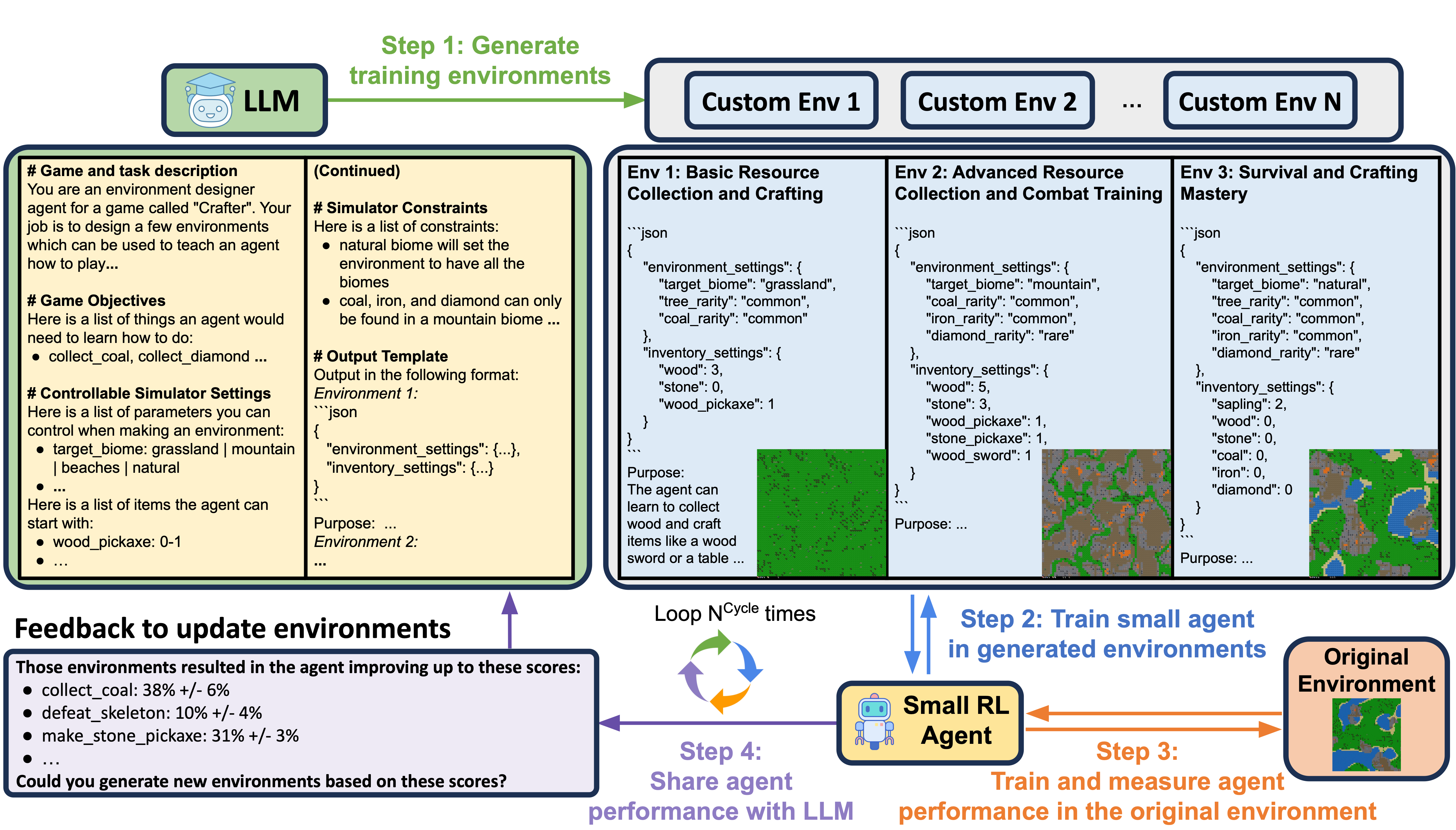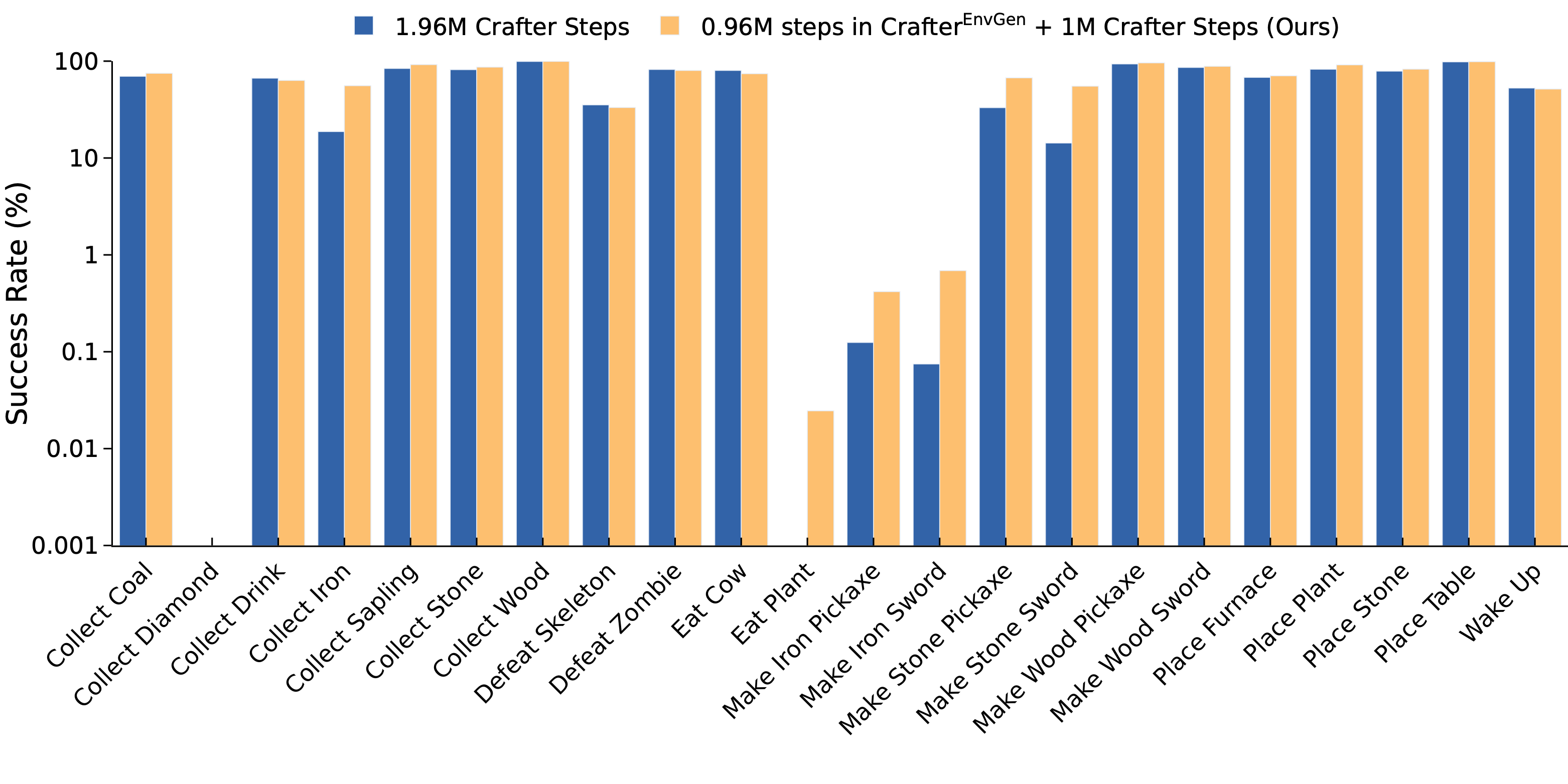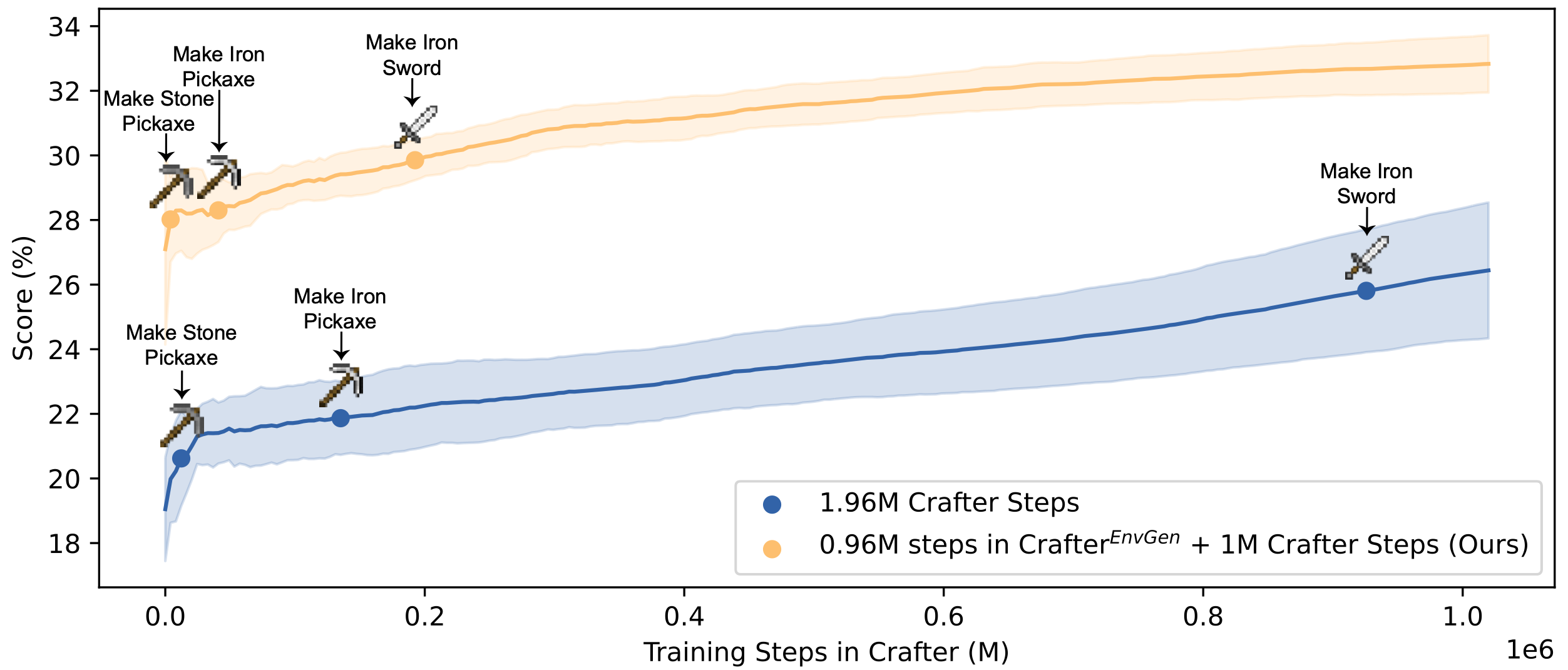

Recent state-of-the-art approaches for embodied learning via interaction directly employ large language models (LLMs) as agents to determine the next steps in an environment. Due to their world knowledge and reasoning capabilities, LLM agents achieve stronger performance than previous smaller agents based on reinforcement learning (RL); however, frequently calling LLMs is slow and expensive. This begs an interesting question: Instead of directly employing LLMs as embodied agents, can we use LLMs’ reasoning capabilities to adaptively create training environments to help smaller embodied RL agents learn useful skills that they are weak at?
In this work, we propose EnvGen, a novel framework to address this question. First, we prompt an LLM to generate training environments that allow agents to quickly learn different tasks in parallel. Concretely, the LLM is given the task description and environment simulator objectives that the agents should learn and is then asked to generate a set of environment configurations (e.g., different terrains, items initially given to agents, chance of finding certain objects, etc.). Next, we train a small RL agent in a mixture of the original and LLM-generated environments. Then, we enable the LLM to continuously adapt the generated environments to progressively improve the skills that the agent is weak at, by providing feedback to the LLM in the form of the agent's performance.
We demonstrate the usefulness of EnvGen with comprehensive experiments in Crafter and Heist game environments. We find that a small RL agent trained with EnvGen can outperform SOTA methods, including a GPT-4 agent, and learns longhorizon tasks significantly faster. We also show qualitatively how the LLM adapts training environments to help improve RL agents' weaker skills over time. We also show that using an LLM to adapt environments dynamically outperforms curriculum learning approaches and how the LLM adapts training environments to help improve RL agents' weaker skills over time. Additionally, EnvGen is substantially more efficient as it only uses a small number of LLM calls (e.g., 4 in total), whereas LLM agents require one or more LLM calls per step (resulting in thousands of LLM calls per episode). Lastly, we present detailed ablation studies for EnvGen's design choices.

| Step 1: | We provide an LLM with a prompt composed of four components (i.e., task description, environment details, output template, and feedback from the previous cycle), and ask the LLM to fill the template and output various environment configurations that can be used to train agents on different skills. |
| Step 2: | We train the RL agent in multiple LLM-generated environments (i.e., LLM environments), so that it can learn different useful skills in parallel. |
| Step 3: | We first train the RL agent in the original environment to mitigate overfitting to the LLM environments. Then we measure the current RL agent’s performance in different tasks in the original environment to check which skills/tasks the agent is still weak at. |
| Step 4: | We provide the LLM with the agent performance from the original environment (measured in step 3) as feedback for adapting the LLM environments in the next cycle to focus on the weaker performing skills. |






@inproceedings{Zala2024EnvGen,
author = {Abhay Zala* and Jaemin Cho* and Han Lin and Jaehong Yoon and Mohit Bansal},
title = {EnvGen: Generating and Adapting Environments via LLMs for Training Embodied Agents},
year = {2024},
booktitle = {COLM},
}